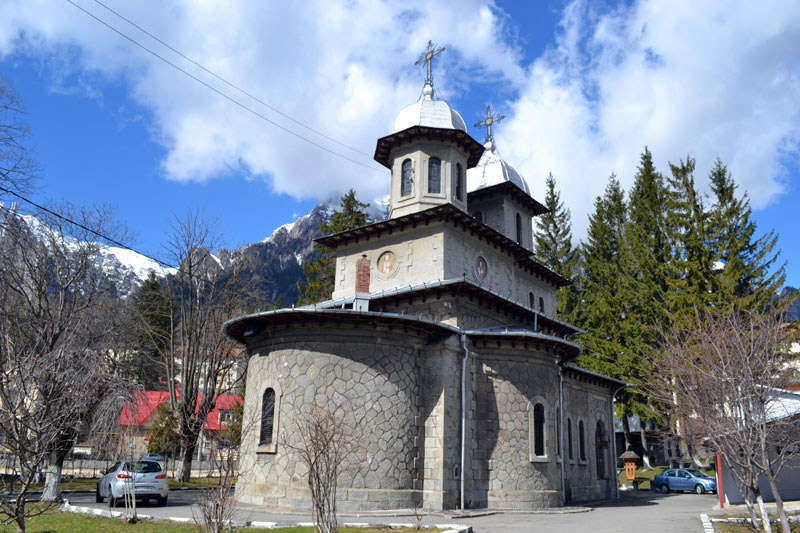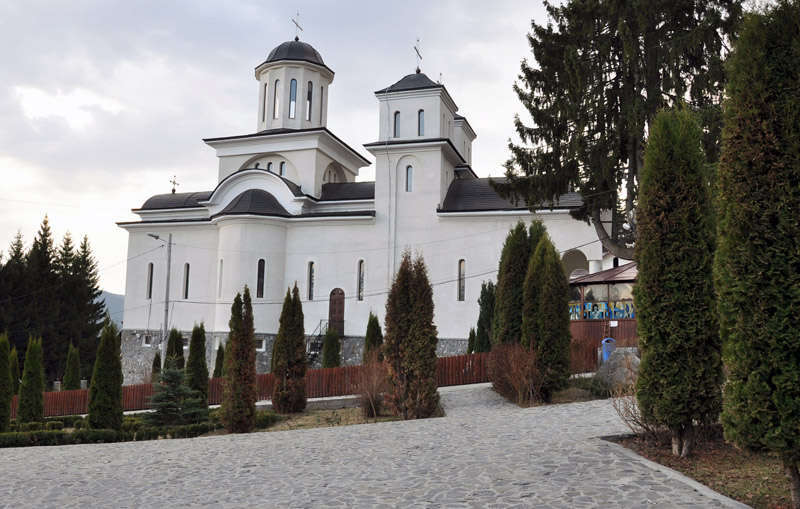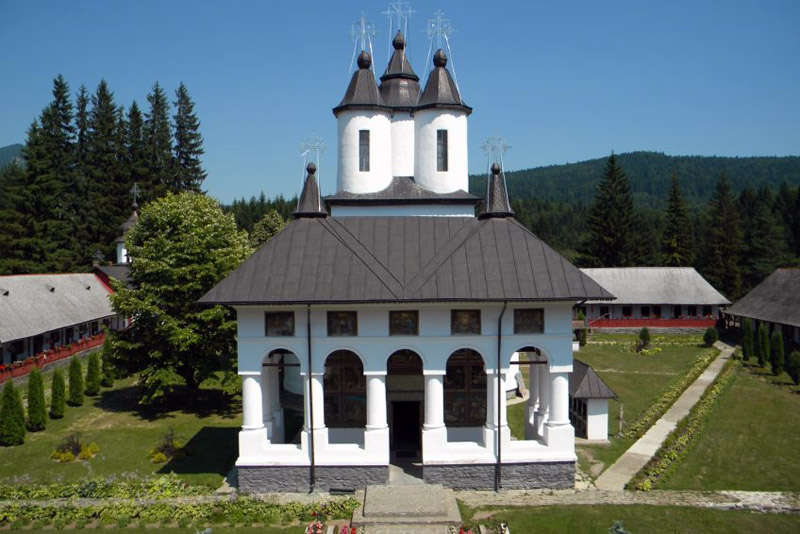Monasteries and churches
The prevalent religion is Orthodoxism, almost 88% of Romanian population declaring themselves as Christian - Orthodox. The Romanian Orthodox Church is almost 2 000 years old.
Therefore, most of the Romanian monasteries and churches belong to the Christian - Orthodox Church. Below we show you the most beautiful and impressive places of worship on Valley of Prahova.
Princely Church
 The church is built in a cross shape with 2 towers with different styles by an Italian team lead by Pietro Dreossi. The entire furniture is made from solid wood. The incredible beautiful iconostasis was made in Vienna and it is considered the most beautiful in entire Romania. The altar paintings are made by Agnes Exner, and the original icons are painter Gheorghe Tatarascu's creations.
The church is built in a cross shape with 2 towers with different styles by an Italian team lead by Pietro Dreossi. The entire furniture is made from solid wood. The incredible beautiful iconostasis was made in Vienna and it is considered the most beautiful in entire Romania. The altar paintings are made by Agnes Exner, and the original icons are painter Gheorghe Tatarascu's creations.Caraiman Monastery
 The narrow path takes its pilgrims to a light oasis where massif Caraiman comes up, also having this monastery. The specific place to build this impressive monastery was chosen by Priest Gherontie Puiu not by hazard, but being guided by The Holy Mother, who helped him through the difficult times of his life and whom he often met in his dreams. Having the belief his birth was protected by The Holy Mother, Priest Gherontie Puiu also strongly believes he was chosen for this holy mission and, after long years of hard work, he succeeded in building Caraiman monastery.
The narrow path takes its pilgrims to a light oasis where massif Caraiman comes up, also having this monastery. The specific place to build this impressive monastery was chosen by Priest Gherontie Puiu not by hazard, but being guided by The Holy Mother, who helped him through the difficult times of his life and whom he often met in his dreams. Having the belief his birth was protected by The Holy Mother, Priest Gherontie Puiu also strongly believes he was chosen for this holy mission and, after long years of hard work, he succeeded in building Caraiman monastery.Cheia Monastery
 In 1830, they build another hermitage - "The Assumption of Virgin Mary ", which was almost entirely destroyed by a fire. In 1835, the great governor Mihai Ghica donated a place to two Transylvanian brothers : prior Damaschin and Justin Barsan, so they could build the current church which was blessed four years later, being named "The Holy Trinity". From the architectural point of view, Cheia Monastery is defined by the traditional Muntenian style. The building itself is massive, having 23 m in length and 6.5 m width, having three high towers that gives a specific elegant line. The monastery is surrounded by the monks' rooms, on the Western side there is the bell tower and on the Northern part there is the chapel of "The Assumption of Virgin Mary".
In 1830, they build another hermitage - "The Assumption of Virgin Mary ", which was almost entirely destroyed by a fire. In 1835, the great governor Mihai Ghica donated a place to two Transylvanian brothers : prior Damaschin and Justin Barsan, so they could build the current church which was blessed four years later, being named "The Holy Trinity". From the architectural point of view, Cheia Monastery is defined by the traditional Muntenian style. The building itself is massive, having 23 m in length and 6.5 m width, having three high towers that gives a specific elegant line. The monastery is surrounded by the monks' rooms, on the Western side there is the bell tower and on the Northern part there is the chapel of "The Assumption of Virgin Mary".Sinaia Monastery
The secondary church - Built in 1695 by the great sword-bearer Mihai Cantacuzino who also gives its “Sinaia” name after his pilgrimage from 1862 when, from all the religious places he visited, was profoundly impressed with Sinai Monastery.
Tache Ionescu's grave - Is the well-known politician's resting place. He dedicated his entire life and effort to unite the Romanian historical provinces.
Sinaia Monastery Museum - Built in 1895 at the celebration of bicentennial of the monastery. Thus it becomes the first religious museum in Romania.
The bell tower - Dates from 1892, its bell was brought here from Coltea tower - Bucharest and it weights 1700 kg.
If this holiday destination meets your requirements, please sa ne ask us for an offer. Or carry on seeing our touristic recommendation:

 EUR
EUR USD
USD GBP
GBP CHF
CHF XAU
XAU Bucharest
Bucharest
 Amsterdam
Amsterdam
 Athens
Athens
 Berlin
Berlin
 Brussels
Brussels
 Budapest
Budapest
 Copenhagen
Copenhagen
 Moscow
Moscow
 Oslo
Oslo
 Paris
Paris
 Prague
Prague
 Rome
Rome
 Stockholm
Stockholm
 Vienna
Vienna



















